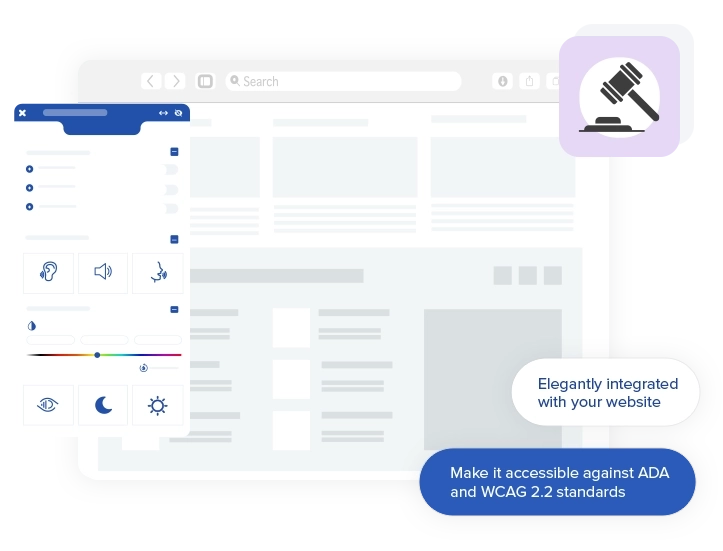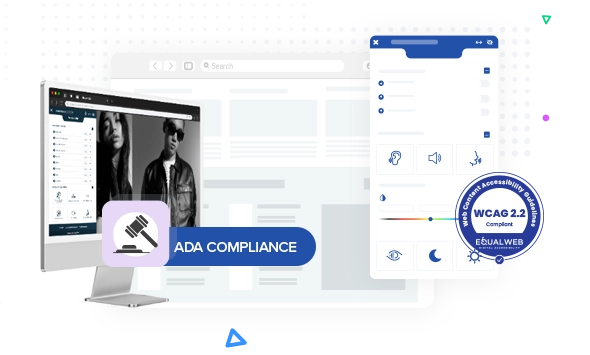VPAT Compliance & Accessibility: Meeting Legal & Industry StandardsTL;DR - VPAT compliance ensures that digital products meet accessibility standards like WCAG, Section 508, and the ADA. Businesses selling to government agencies and enterprises need to comply with these regulations to avoid legal risks and ensure inclusivity. This guide explains what VPAT compliance means, how to achieve it, and why it’s essential for accessibility.What is VPAT Compliance?VPAT compliance refers to the process of ensuring that a digital product or service aligns with accessibility regulations outlined in the Voluntary Product Accessibility Template (VPAT). Organizations that require compliance must evaluate their products against accessibility standards, including WCAG (Web Content Accessibility Guidelines), Section 508 of the Rehabilitation Act, and the ADA (Americans with Disabilities Act).A VPAT serves as a formal Accessibility Conformance Report (ACR), helping businesses demonstrate their commitment to inclusivity. Without proper compliance, organizations risk legal challenges, lost contracts, and damage to their reputation. Read more about VPATs in our comprehensive guide 
Why is VPAT Compliance Important?For businesses, VPAT compliance is more than a regulatory necessity—it is a way to ensure equal access for individuals with disabilities. Government agencies and many enterprises require VPAT documentation before considering digital products for purchase. Ensuring compliance helps organizations avoid legal risks, expand their market reach, and strengthen their brand reputation.Failure to achieve VPAT compliance can lead to contract rejections, financial penalties, and negative publicity. Beyond legal concerns, prioritizing accessibility fosters a more inclusive digital landscape and improves user experience for a broader audience. 
How to Achieve VPAT ComplianceAchieving VPAT compliance involves a structured process that includes accessibility testing, remediation of issues, and proper documentation.1. Conduct an Accessibility Audit The first step toward VPAT compliance is a thorough audit of the digital product. Automated testing tools can help identify common accessibility issues, but manual testing is also essential. Experts evaluate usability by ensuring the product works effectively with screen readers, keyboard navigation, and other assistive technologies. Explore VPAT Testing & Audits 2. Remediate Accessibility Barriers Once accessibility issues are identified, businesses must address them before completing the VPAT. Adjusting color contrast for readability, ensuring seamless keyboard navigation, and adding descriptive alt text for images are some of the key improvements necessary. Forms, buttons, and other interactive elements must also be designed to be accessible to all users. 3. Complete & Publish the VPAT Report After testing and remediation, the next step is documenting findings in the VPAT template. The completed document, known as an Accessibility Conformance Report (ACR), should be published on the company’s website or shared with stakeholders and procurement teams upon request. Learn more about VPAT Versions & ACR Where to Get VPAT Compliance SupportCompanies seeking VPAT compliance can either perform in-house audits or partner with accessibility specialists. EqualWeb provides a comprehensive VPAT evaluation service, combining automated scans with expert manual reviews to ensure a fully compliant report.Next Steps for VPAT ComplianceIf your business needs VPAT compliance, start with a detailed accessibility assessment. EqualWeb offers professional services to guide organizations through compliance requirements and generate accurate VPAT reports.
FAQs About VPAT Compliance |
Web Accessibility is EqualWeb
Accessibility made easy with AI technology and certified experts
Web accessibility compliance with CPAA-certified experts
Get Free trial
7 days FREE Trial Unlimited pageviews & user session for all plans
|

